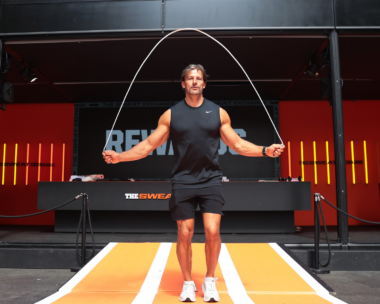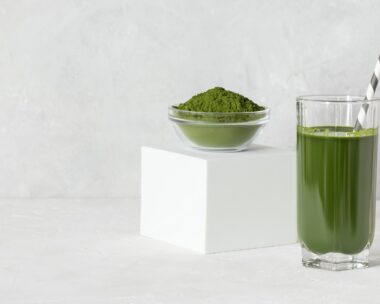If you have diabetes, you know how important it is to maintain a healthy weight to manage and improve your condition.
According to the latest Australian Bureau of Statistics data, adults aged 18 years and over who are obese are almost five times more likely as those of normal weight to have Type 2 diabetes; while adults who are overweight were more than twice as likely.
However, it can be difficult to lose those extra kilos when you are dealing with the impact of diabetes medications, diabetes-related fatigue, needing to snack regularly to maintain your blood glucose levels.
Here are some tips for beating the weight loss challenges that diabetes presents.
The insulin connection
If you have type 1 diabetes, your pancreas produces little or no insulin, while with type 2 diabetes, it doesn’t work effectively. In both cases, your body either struggles or is unable to convert glucose into energy, leaving too much in your blood.
When you take insulin to treat diabetes, it stimulates muscle, fat, and liver cells to absorb glucose. But, if you take in more kilojoules than you need to maintain a healthy weight, it can lead to fat storage in the body.
The answer isn’t to stop taking insulin or skip doses, as this can cause long-term health complications. Instead, look at portion control, low-GI foods and healthier snacking.
Sleep
A good night’s sleep does more than make us feel good and function better. It also regulates hormones that control our appetite, weight, and blood glucose level. Both high and low blood glucose levels can impact your sleep, making you feel tired and irritable the next day, and more likely to make poor food choices.
Fatigue is one of the most common symptoms associated with poorly controlled diabetes, so it’s even more important for those with diabetes to maintain healthy lifestyle habits like exercising every day, eating well, drinking a lot of water, and keeping sleep hygiene in check.

Quality sleep is key when it comes to managing diabetes.
(Credit: Getty)Portion control
According to global healthcare leader Abbott, which has created the scientifically formulated diabetes-specific health shake Glucerna, about a quarter of your plate should be filled with low GI carbohydrates such as wholegrains or a starchy food such as a low-GI basmati rice, wholegrain pasta or corn.
Another quarter of your plate should be filled with lean protein such as lean red meat, fish, skinless chicken or tofu and the last half of your plate should be filled with raw/cooked non starchy vegetables or salad like broccoli, carrots, salad, and/or beans.
Low GI foods
Low GI foods release glucose slowly and steadily into the bloodstream, which means fewer spikes in blood glucose levels.
However, a recent study published in the British Medical Journal has also shown that low glycaemic diet results in important improvements in cholesterol, weight and other risk factors for people with diabetes.
These improvements were seen over and above existing drug or insulin therapy, suggesting that a low glycaemic diet might be especially helpful as an add-on treatment to help those with diabetes better achieve their targets.
These are examples of low-GI foods you can add to your shopping trolley to help with your diabetes management: traditional rolled oats, dense wholegrain breads, lentils and legumes, sweet potato, milks, yoghurt, pasta and diabetes-specific health shakes like Glucerna.

Incorporating a diabetes-specific health shake like Glucerna into your diet can help stabilise glucose levels.
Healthier snacking
If you have diabetes, you may need to eat snacks throughout the day to maintain your blood glucose levels, especially when exercising to prevent developing hypoglycaemia. Sometimes called a “hypo”, this condition occurs when a person’s blood glucose level has dropped too low. In extreme cases it can lead to seizures or unconsciousness.
When balancing glucose levels and diet, it’s important to choose healthy snack options. Here are some suggestions:
Fruits
Fresh or tinned fruit (e.g. one peach, three apricots, one pear, two mandarins, grapes, half a mango, three plums, one banana, one orange or one circle of pineapple)
One serve of dried fruit (e.g. one tablespoon of sultanas, six prunes, four dried apricots)
Vegetables
Vegetable sticks (e.g. celery, carrot, capsicum, snow peas) with one tbsp low-fat dip
Celery boats filled with two tbsp cottage cheese and tomato
Nuts
30 grams (small handful) of nuts or seeds (plain, raw and unsalted is best)
Breads
One slice of bread with a thin spread of margarine, avocado or low-fat cottage cheese with sliced tomato and sprouts (plain or toasted; grainy/seeded bread is best)
Half wholegrain English muffin with one slice of low-fat cheese and a sliced tomato
One small wholemeal pita pocket or wrap with salad and low-fat cheese
Dairy or alternatives
Small portion of yoghurt (100g low-fat flavoured or 200g of diet/natural/plain)
One cup (250mL) low-fat plain milk/soy milk
Cereal
Half a cup of high-fibre breakfast cereal
Drinks
One cup or 250mL of any low-fat flavoured milk or soy milk or fruit smoothie
One café latté / flat white / cappuccino with low-fat milk/ soy milk
One glass of Glucerna diabetes-specific health shakes
Savoury treats
One cup plain popcorn
30 grams of salt-reduced pretzels
Rice cakes or wheat biscuits topped with cottage cheese, tomato and chives
Two small sushi rolls (avoid using soy sauce)
Staying safe while exercising
Exercising when you have diabetes helps you maintain a healthy weight and contributes to better insulin production. However, it’s important to ensure your fitness regime is working in tandem with your condition and not sabotaging it.
The first step is to talk to your doctor or specialist about the best way to exercise safely, as it’s crucial to you keep your blood glucose levels stable. Uncontrolled blood glucose means people with diabetes become more easily dehydrated, as higher blood glucose levels means more trips to the bathroom. Increased urination brings on dehydration which can lead to tiredness, headaches and dizziness.
Avoid taking part in strenuous physical activity if you are feeling unwell or have ketones present in your blood or urine.
If you are feeling well, take things slowly and keep an eye on your glucose levels.

Talk to your doctor about the best exercise for you.
(Credit: Getty)Diabetes Australia suggests drinking extra fluid before, during (if it’s prolonged exercise) and after exercise to avoid dehydration. The fluid may be water or a sweetened drink if extra carbohydrate is required, with 250 ml every 15 minutes or one litre of fluid per hour being recommended.
Extra carbohydrate before and during exercise can prevent hypoglycaemia, they are also often needed after exercise.
It can also be useful to incorporate drink supplements into your diet. Glucerna are diabetes-specific health shakes scientifically formulated for people with diabetes or impaired glucose tolerance. When used as part of a diabetes management plan, including a healthy diet and physical activity, Glucerna can help manage your blood glucose levels.
Glucerna contains a unique blend of slow-release low glycaemic index (GI) carbohydrates that help minimise blood glucose spikes when compared to fast-release, high GI carbohydrates. It can also be used in healthy snack recipes. Click here to learn more.
Brought to you by Glucerna.
**Food for special medical purposes. Use under medical supervision.*
.jpg)



